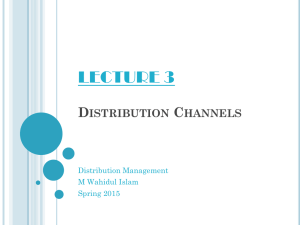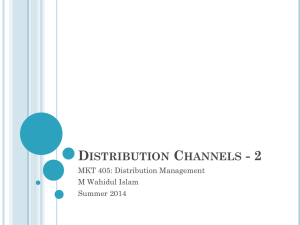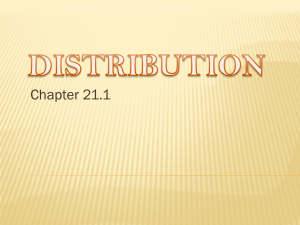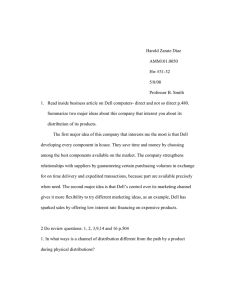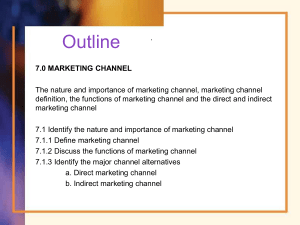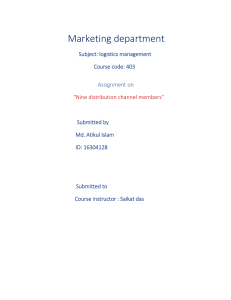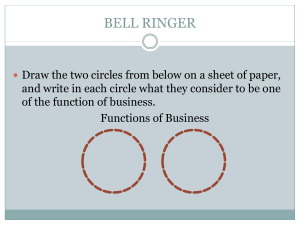Distribution Channel Members - MKT 405 Distribution Management
advertisement
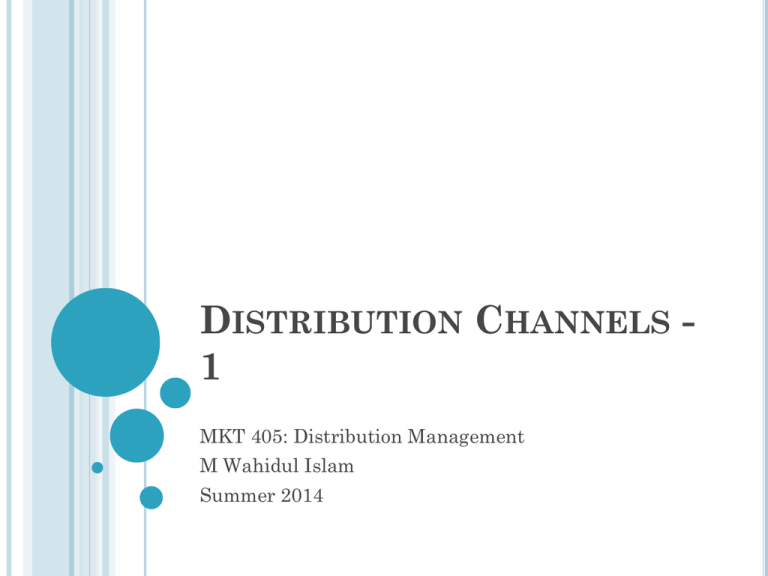
DISTRIBUTION CHANNELS 1 MKT 405: Distribution Management M Wahidul Islam Summer 2014 Planning, Forecasting & Budgeting Warehousing and Logistics Channel Information Systems Sales Force Management Elements of Distribution Management Distribution Channels Product Pricing and Promotion Product Visibility WHAT IS A DISTRIBUTION CHANNEL? A group of people and firms involves in the transfer of title or ownership as the product moves from the producer to the ultimate consumer “the structure of intra company organization units and extra company agents, dealers, wholesalers and retailers through which a commodity, product or service is marketed” – American Marketing Association KEY QUESTIONS FOR DISTRIBUTION CHANNEL Who will be the Channel Members? Who is driving the Channel? What What is the Channel Format? would be the Patter of Distribution? DISTRIBUTION CHANNEL MEMBERS Company Owned Distribution Center Distributors/ Dealers / Stockiest Carrying and Forwarding Agents Owned or Contracted Consignment Selling Agents or General Selling Agents Exclusive / Shared Value Added Resellers Wholesalers Direct Marketing Sales force Retailers Franchises DISTRIBUTION CHANNEL MEMBERS C&FA Consignment Selling Agents (CSAs) or General Selling Agents (GSAs) Facilitators Do not pay for the product or hold physical possession of the goods. Merely stores in a central location and then pass it on to the distributor Example: Edible Oil Industries Sales the goods on behalf of the company and transfer amount to the producer Example: Shipping Companies, Airlines Companies Value Added Resellers Purchases incomplete product or kit and add value to assembling it and then selling to customers Example: Personal Computers, Bicycles, Producer CSAs / GSAs Direct Marketing Team Central Distributor Regional / Market Specific Distributor Wholesalers Retailers Customers Authorized Reseller Own Branded Store PATTERS OF DISTRIBUTION It represents the service level that the organization provides to its customers Intensive Distribution • The strategy is to make the product available to as many customer as possible • Example: Unilever, GP, BATB, FMCG Products Selective Distribution • Few carefully selected outlets are permitted to keep company’s products • Example: QUBEE, HP, Nikon Exclusive Distribution • Only one or two outlets in a market may keep the company’s product • Example: Franchises, BATA, Transcom, KFC REFERENCES Chapter 8 – Distribution Management and the Marketing Mix Havaldar K. and Cavale V. M. (2011) Sales and Distribution Management – Text and Cases (2nd Edition) Delhi: Tata McGraw-Hill Education Private Limited END
